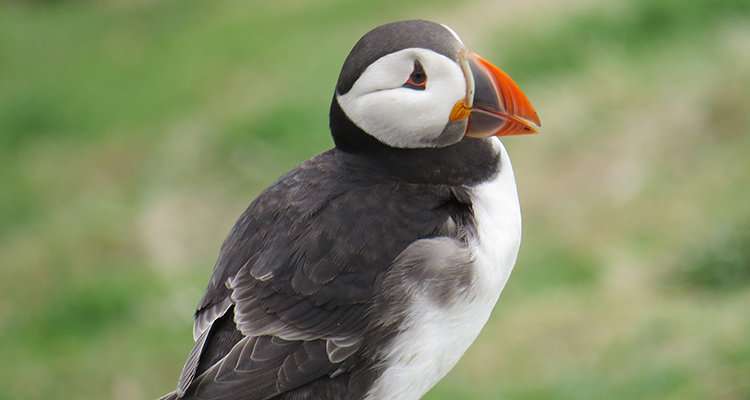I'm a puffin scientist

The future looks brighter for the colourful puffins on the Isle of May off the coast of Fife in Scotland, where experts from NERC's Centre for Ecology & Hydrology are conducting one of the most comprehensive studies of seabird populations in the world.
Isle of May field manager Mark Newell gives an insight into his work on the island and how people can help with the serious task of protecting the so-called 'clowns of the sea'.
Santa puffin
The return of Santa puffin is one of my favourite sights on the Isle of May. As it comes in to land, I can see not only its naturally vibrant colours, but also the unmistakable red and white rings on its leg. We ring each puffin with its own unique colour combination so we can identify them, and some, like Santa, end up with nicknames because they match things like a nation's flag, or a football strip. So Santa is one of the puffins you remember from one year to the next, and seeing it fly in again I think, "okay, that's good, you survived another winter".
I'm on the island from mid-April to the end of July observing the seabirds and recording changes. They are the most charismatic of the seabirds and most of the time are not bothered by my presence. In fact, they make me feel quite irrelevant, which I think is a good thing as I'm in their habitat.
They are very curious though and it's not unknown for them to wander into the canvas hides which we sometimes use, or to try to undo the guy ropes securing the hides. They're especially interested in dark places, as they are always on the lookout for somewhere new, which could make a potential home.
Good news and bad news
This season I'm just crunching the figures and it's proving to be another fairly successful year on the Isle of May, where the birds have generally been doing quite well since the population crashed about a decade ago. But that's in contrast with the position in other parts of Scotland, like St Kilda, where seabirds are doing really poorly, and Orkney and Shetland which have had a run of poor seasons.
We're still working through the data on their diet, but like all the birds we study on the Isle of May, the puffins' primary food is sandeel, a type of fish.
The sandeels have got smaller over the past decade, something which is linked to climate change, a key focus where our work can help inform government policy. The plankton they feed on like cold water, and as the sea temperatures rise, the plankton move further north, so the sandeels don't grow as fast. There are more sandeels now but they are smaller, which has a knock-on effect on seabirds who have to catch more.
Our work can also help to guide policy on fishing. In the past, we have seen close links between increasing sandeel fishing and reducing populations of kittiwakes.
Plastic waste
Plastic waste is another issue on the island, and nationwide. I find the scale and variety of the plastic that washes up here baffling and frightening. You see parts of children's dolls or babies' dummies, and you think "how did that get here?".
The most common sight is plastic cotton bud stems, which are everywhere. At a population level the direct impact is not hugely concerning as it is quite low, but we have found nurdles - tiny plastic pellets - in the stomachs of about 15% of the dead puffins which we pick up routinely to find out more about them. Plastic isn't what killed them but it's not good for them either, it will have some impact on their ability to digest food.
Provided by PlanetEarth Online
This story is republished courtesy of Planet Earth online, a free, companion website to the award-winning magazine Planet Earth published and funded by the Natural Environment Research Council (NERC).


















